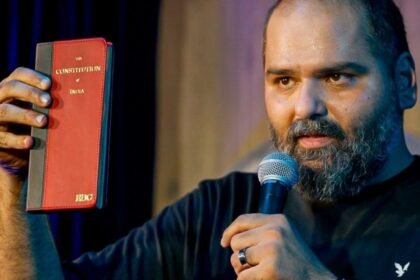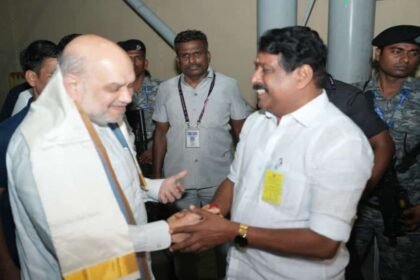Last Updated:
BJP’s move is being seen as a strategic extension of its broader Hindutva agenda, which has seen massive investments in development of temple towns like Ayodhya, Kashi & Mathura

After the high-profile consecration of the Ram Mandir in January 2024, BJP appears keen to replicate that spiritual and symbolic success across the state. (PTI)
The Bharatiya Janata Party (BJP), in the run-up to the crucial panchayat elections and with eyes firmly set on the 2027 Uttar Pradesh assembly polls, has kicked off a state-wide ‘Mission Temple’ campaign aimed at rejuvenating ancient and district-protected temples across the state. The move is being seen as an ambitious blend of religious sentiment, cultural preservation, and electoral strategy.
The initiative, formally launched through an order issued by principal secretary (religious affairs) Mukesh Kumar Meshram, marks an attempt by the Yogi Adityanath-led government to restore temples of religious, mythological, or historical significance that have fallen into disrepair. The focus will primarily be on temples listed under the Janpadiya Sanrakshit Mandir (district-protected temples) category as well as others that draw significant public attention.
Restoration Initiative More Than An Archaeological Effort?
Sources within the BJP confirm that the temple restoration initiative is more than just a religious or archaeological effort—it is part of a broader electoral outreach plan.
“Temples are not just places of worship. In rural and semi-urban Uttar Pradesh, they serve as social and cultural centres. Strengthening them helps strengthen the party’s connect with the people,” a senior BJP functionary told News18.
With the panchayat elections expected to take place in early 2026 and the assembly polls following in 2027, the BJP is looking to consolidate its traditional voter base while also reaching out to communities that feel culturally aligned with the temple ecosystem.
Restoration With Focused Criteria
Under the newly issued framework, priority will be accorded to temples that hold significant religious, historical, or cultural value but are currently in a deteriorated condition. Temples that attract a large number of devotees, pilgrims, and tourists will be placed higher on the list, as will those that are architecturally unique or situated in areas with spiritual importance.
Special consideration will be given to temples protected by the Uttar Pradesh State Archaeological Department. Additionally, proposals where at least 50 per cent of the restoration cost can be covered through donations, corporate social responsibility (CSR) contributions, or other non-governmental sources will be favoured. Officials said this approach is designed to encourage public participation while easing the financial burden on the state exchequer.
Orders to Districts, Focus on Quick Implementation
Principal Secretary Mukesh Kumar Meshram, in his directive to district magistrates, instructed them to begin identifying such temples and submit proposals for urgent renovation work. “We’ve been receiving representations from local leaders and citizens for the restoration of these spiritual centres. The state will now actively coordinate their rejuvenation through a structured mechanism,” he said.
The district magistrates have been told to work in tandem with local public representatives, religious leaders, and archaeology officials to compile lists of eligible temples. Each proposal will be vetted based on historical relevance, structural integrity, and cultural importance.
Political Messaging in Heritage Conservation
The BJP’s move is being seen in political circles as a strategic extension of its broader Hindutva agenda, which has seen massive investments in the development of temple towns like Ayodhya, Kashi, and Mathura. After the high-profile consecration of the Ram Mandir in January 2024, the party appears keen to replicate that spiritual and symbolic success across the state.
“The restoration of temples is not a short-term political project—it’s about re-establishing a civilisational identity,” said a BJP MLA from eastern Uttar Pradesh. “But yes, it also helps us strengthen grassroots support, especially in areas where caste arithmetic is not in our favour,” he added.
Opposition parties, meanwhile, have criticised the timing of the initiative. A senior Samajwadi Party leader remarked, “The BJP remembers temples only when elections are near. What about schools, hospitals, and basic infrastructure in rural areas?”
Impact on Rural and Semi-Urban Sentiment
Many of the temples under consideration are located in remote villages and smaller towns, where their presence is deeply tied to local folklore, festivals, and traditions. For instance, in Bundelkhand and Purvanchal, numerous temples dating back hundreds of years are now in disrepair due to lack of funds and administrative apathy.
With ‘Mission Temple’, BJP hopes to tap into this local sentiment. The party’s district units have also been informally asked to identify religious events and festivals linked to such temples that can be amplified through government or party support. These cultural events, coupled with infrastructure upgrades, are expected to create lasting impressions ahead of the electoral season.
view comments
- First Published:






